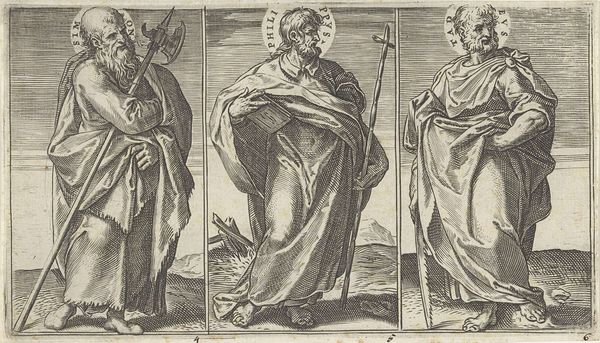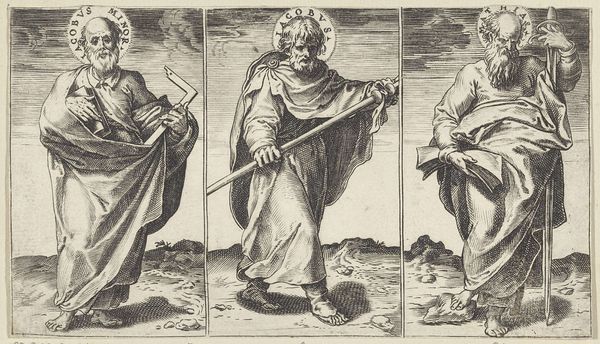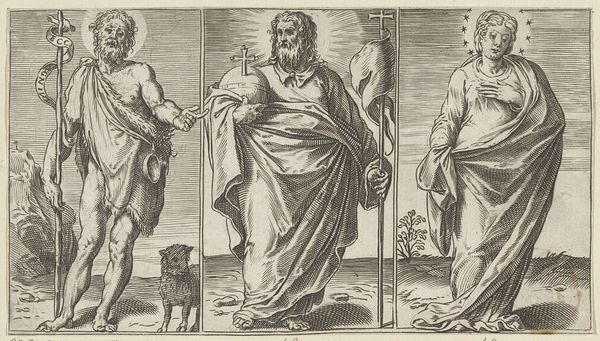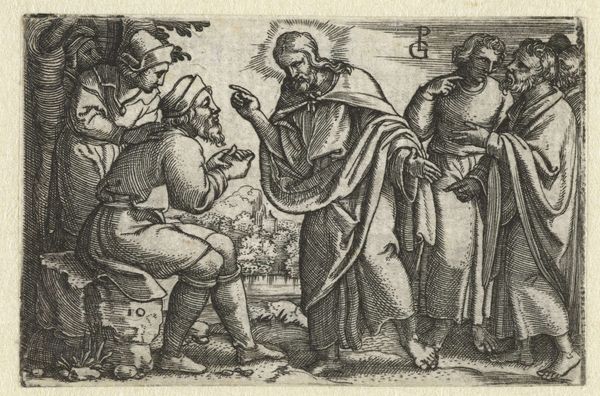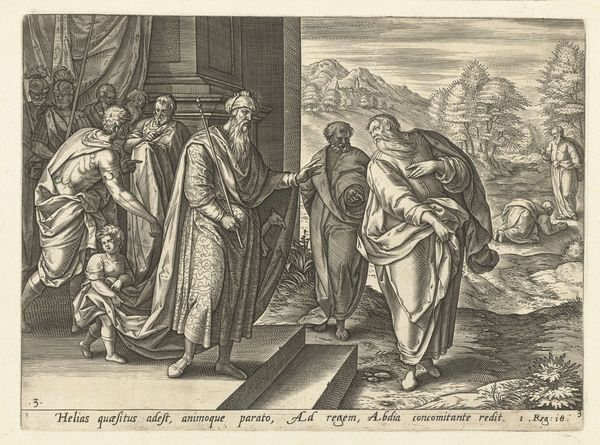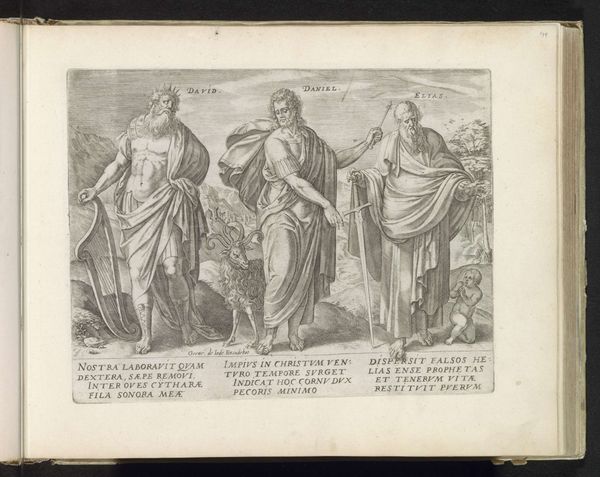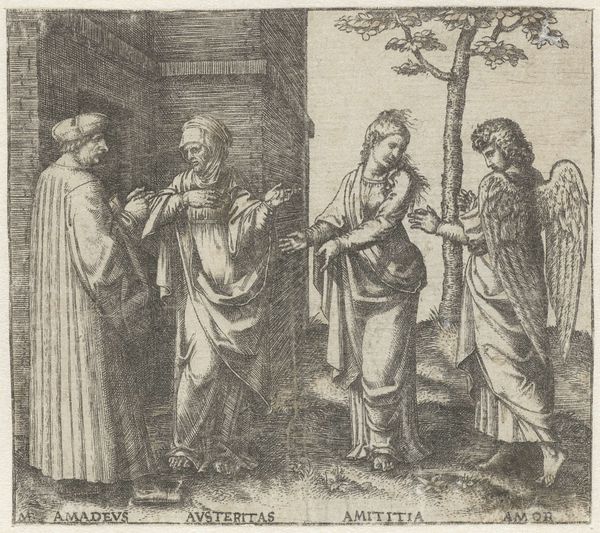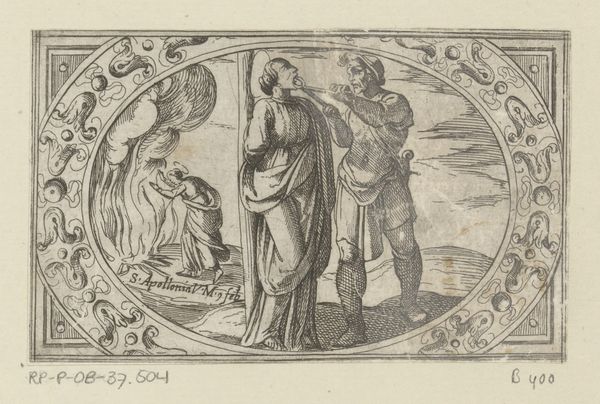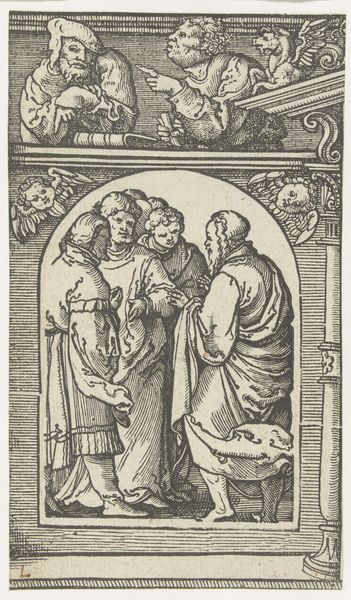
Dimensions: height 105 mm, width 188 mm
Copyright: Rijks Museum: Open Domain
Editor: This engraving from 1583 by Agostino Carracci, titled "Bartolomeüs, Tomas en Petrus," depicts three standing figures. The density of lines used to create shading is remarkable. How does the medium contribute to the artwork's meaning? Curator: What strikes me is the deliberate nature of the engraving process itself. Each line is a conscious decision, a mark of labor. In a period grappling with the Reformation and questioning religious authority, consider how this very reproducible medium - printmaking - allowed for wider dissemination of imagery. It democratized access, challenging the traditional power structures inherent in unique, hand-crafted artworks. Editor: That makes sense. It wasn’t just about artistic skill, but the conscious choice to use a medium that could spread ideas quickly. Curator: Exactly! The materiality of the print – the paper, the ink, the very act of pressing the image onto the surface – speaks to the changing social landscape. Are these images of powerful religious figures presented in a reverential light, or are they intended for mass consumption and interpretation? The "pen sketch" quality as well, for example, hints to accessibility, doesn't it? How does the artist subvert and respect popular belief simultaneously? Editor: So you're suggesting the choice of printmaking transforms the image from a sacred representation to something more like a widely available product, subject to different kinds of scrutiny? Curator: Precisely. It prompts us to consider who had access to these images, what meanings they might have drawn from them, and how they participated in the visual culture of the time. By examining the material conditions of production, we can better understand the social and religious forces at play. Editor: I never considered printmaking as a kind of social commentary! It's fascinating to think about the process itself conveying meaning. Curator: Indeed. It forces us to consider art not just as an aesthetic object, but as a product of and participant in a specific material and social world.
Comments
No comments
Be the first to comment and join the conversation on the ultimate creative platform.

